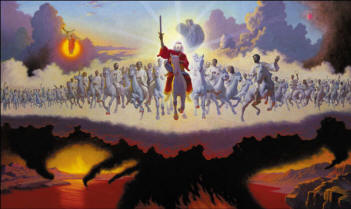This is one of the easiest explanations of the pole shift predicted for Earth in the immediate future. Science is not my forte (except my great interest in quantum physics), so if I vaguely understood this, you should have no problem. It comes from a subscription website: http://www.earthchangesmedia.com/
Mitch Battros - Earth Changes Media
Yes, it has everything to do with the Sun, but also with our galaxy 'Milky Way'. It is a cycle, and we are at the end of this one - or one could say the beginning of the new one. The new stats on the Earth's magnetic pole shifts show a vastly faster time sequence than was previously known. What was not mentioned was all that goes with such events.
The cause of a magnetic pole shift is a weakened magnetic field and a charged up Earth's core. This occurring at the same time during the 'apex' of a solar cycle - in this case Cycle 24, and you have a scenario which allows charged particles i.e. solar flares, CME's, coronal holes, GRB's, and cosmic galactic rays to have hard shot at Earth's core. When this occurs - one might say 'all hell breaks loose'.
What this suggests is the Earth's inner and outer core becomes extremely active, this in-turn affects the mantle, this in-turn causes earthquakes to rattle and volcanoes to erupt. Additionally, as a result of a fragile magnetic field, charged particles will play havoc on all forms of extreme weather.
Equation:
Sunspots => Solar Flares (charged particles) => Magnetic Field Shift => Shifting Ocean and Jet Stream Currents => Extreme Weather and Human Disruption (mitch battros)
Scientists have long known that the magnetic pole moves. James Ross located the pole for the first time in 1831 after an exhausting arctic journey during which his ship got stuck in the ice for four years. No one returned until the next century. In 1904, Ronald Amundsen found the pole again and discovered that it had moved--at least 50 km since the days of Ross.
Current evidence suggests we are now approaching one of these transitional states because the main magnetic field is relatively weak and rapidly decreasing. While the last polarity reversal occurred several hundred thousand years ago, the next might come within our lifetime. Current evidence suggests we are now approaching one of these transitional states because the main magnetic field is relatively weak and rapidly decreasing, he says. While the last polarity reversal occurred several hundred thousand years ago, the next might come within only a few thousand years.
The geo-paleo record in one particular lava flow in Nevada suggests the magnetic field moved by 53 degrees in a single year. The lava started to cool, but was then heated again within a year as it was buried under fresh lava. The crystals in the rock were re-magnetized by the fresh lava, producing a shift of 53 degrees.
This finding could mean the poles swapped over a period of only four years, but Brogue said it could also suggest there was a rapid acceleration period within the steady movement of the field. The pole kept going during the 20th century, north at an average speed of 10 km per year, lately accelerating "to 40 km per year," says Newitt. At this rate, it will exit North America and reach Siberia in a few decades.
Earth's magnetic field is changing in other ways. Compass needles in Africa are drifting about 1 degree or more per decade. Globally the magnetic field has weakened 10% since the 19th century and perhaps another 10% in just the last few years. When this was mentioned by researchers at a recent meeting of the American Geophysical Union, many newspapers carried the story. A typical headline: "Is Earth's magnetic field collapsing?"
Sometimes the field completely flips. The north and the south poles swap places. Such reversals, recorded in the magnetism of ancient rocks, are unpredictable. They come at irregular intervals averaging about 300,000 years; the last one was 780,000 years ago. Are we overdue for another? No one knows.
At the heart of our planet lies a solid iron ball - about as hot as the surface of the Sun. Researchers call it "the inner core." It's really a world within a world. The inner core is 70% as wide as the moon. It spins at its own rate, as much as 0.2 degrees of longitude per year faster than the Earth above it, and it has its own ocean: a very deep layer of liquid iron known as "the outer core."
Earth's magnetic field comes from this ocean of iron, which is an electrically conducting fluid in constant motion. Sitting atop the hot inner core, the liquid outer core seethes and roils like water in a pan on a hot stove. The outer core also has "hurricanes"--whirlpools powered by the *'Coriolis' effect of Earth's rotation. These complex motions generate our planet's magnetism through a process called the dynamo effect.
*On Earth the 'Coriolis Effect' deflects moving bodies to the right in the northern hemisphere and to the left in the southern hemisphere.
Extreme and periodic sudden changes will occur. They always have ... and they always will. It just so happens this is likely to occur in many of our lifetime. As mentioned prior; it is not so important as to 'where' you live, as to 'whom' you surround yourself with during extreme and confusing times.
~ ~ ~ ~ ~
Royal Heir


















